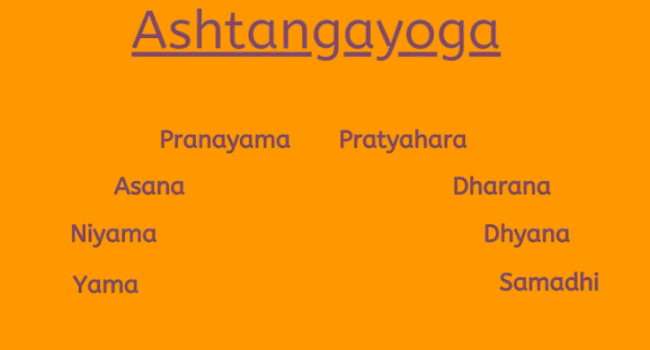Ashtanga yoga (also known as eight-limb yoga) is Patanjali classification of classical yoga, which was recorded by the sage vanana rishi in yoga korunta. This yoga demands the practice that synchronizes breathe and movements to purify our body system. It is great for building core strength, toning our body, and brings dynamic changes in our system. The ultimate purpose of practicing this yoga is to purify our body and mind. When we get deeply and powerfully involved in this we will, of course, the getaway to escape out and fight with all the fears and boundaries we have. This practice has a strong sense of purpose, which helps you to focus and grow.
Late Sri K. Pattabhi Jois popularized this form of yoga during the 20th century. He was greatly influenced by Patanjali’s eight limbs of yoga. The current style of teaching is called Mysore style, which is named after the city where the practice was initially taught.
The eight limbs of ashtanga yoga are Yama, niyam, asana, pranayama, pratyahara, Dharana, dhyana, and samadhi. Detailed description of the eight limbs of yoga are given below:
1. Yama- 1st Limb of Ashtanga Yoga
It is also called the ‘five restraints’ of ashtanga yoga as it describes what one should avoid advancing on the spiritual path. The five restraints of yoga are ahimsa, Satya, asteya, brahmacharya, and aparigraha. Ahimsa includes non- violence, Satya includes truthfulness, asteya means not stealing anything from others, brahmacharya means chastity or sexual restraint, and aparigraha means non-possessiveness. These are the ethical rules of Hinduism and can be taken as imperatives.
2. Niyam
This is the second component of the ashtanga yoga path, which includes observance and virtuous habits. The five niyams are shaucha (purity, clearness of speech), santosha (contentment, acceptance of oneself and others), tapas (persistence, perseverance, and self-discipline), svadhyaya (self-reflection), and ishvarapranidhana (contemplation of the Ishvara).
3. Asana
It is all about a posture that a person can hold for a certain period. This helps for staying relaxed, steady, comfortable, and motionless.
Apart from this Asana, yoga also accomplishes pranayama (breathing exercises), dhyana (meditation), yamas (codes of social conduct), niyamas (self-observances), pratyahara (withdrawal of the senses), Dharana (concentration), and samadhi (bliss).
4. Pranayam
Pranayama is next important limb of Ashtanga yoga. It is all about breathing control. It consists of the synchronization of breath with body posture and is frequently practiced as a form of yoga or meditation. There are five types of prana, which are responsible for pranic activities in the body and they are prana, apana, vyan, Udana & Samana.
5. Pratyahara
It empowers one to stop being controlled by the external world. It is drawing with one’s awareness and retracting the sensory experience from external objects. It is a bridge between external and internal yoga. It withdraws our focus from the senses and external environment so this yoga helps to deepen us and helps to concentrate on ourselves.
6. Dharana
Dharana means concentration and focusing mind towards one point. Fixing the mind helps to maintain a one-pointed focus without a drifting mind from one point to another. This limb of ashtanga yoga helps to maintain focus and establish a concentration in one object. This also helps to hold one’s mind onto a particular inner state.
7. Dhyana
Dhyana is a way of reflecting on whatever you are focusing on. If the focus was on the concept of Dharana, implementation is the concept of dhyana. It is contemplation and mediation. Dhyana is an uninterrupted train of thought, current of cognition, the flow of awareness.
8. Samadhi- The Final Destination of Ashtanga Yoga
Samadhi means to total self – collectedness in Sanskrit. It is oneness with the subject of meditation. There is only oneness in samadhi. It is an act of meditation and a spiritual state when one’s mind is absorbed in whatever it is contemplating on. It helps an individual to dissolve awareness into the great whole.
If you are interested for the Ashtanga yoga retreat with us, feel free to contact us.

